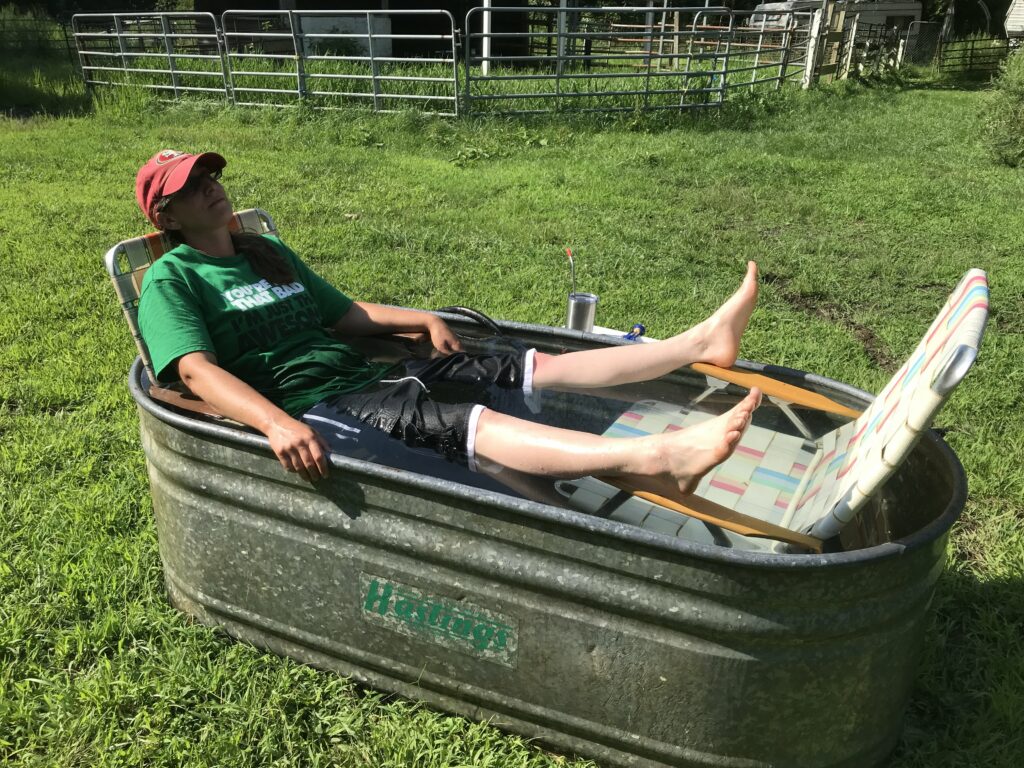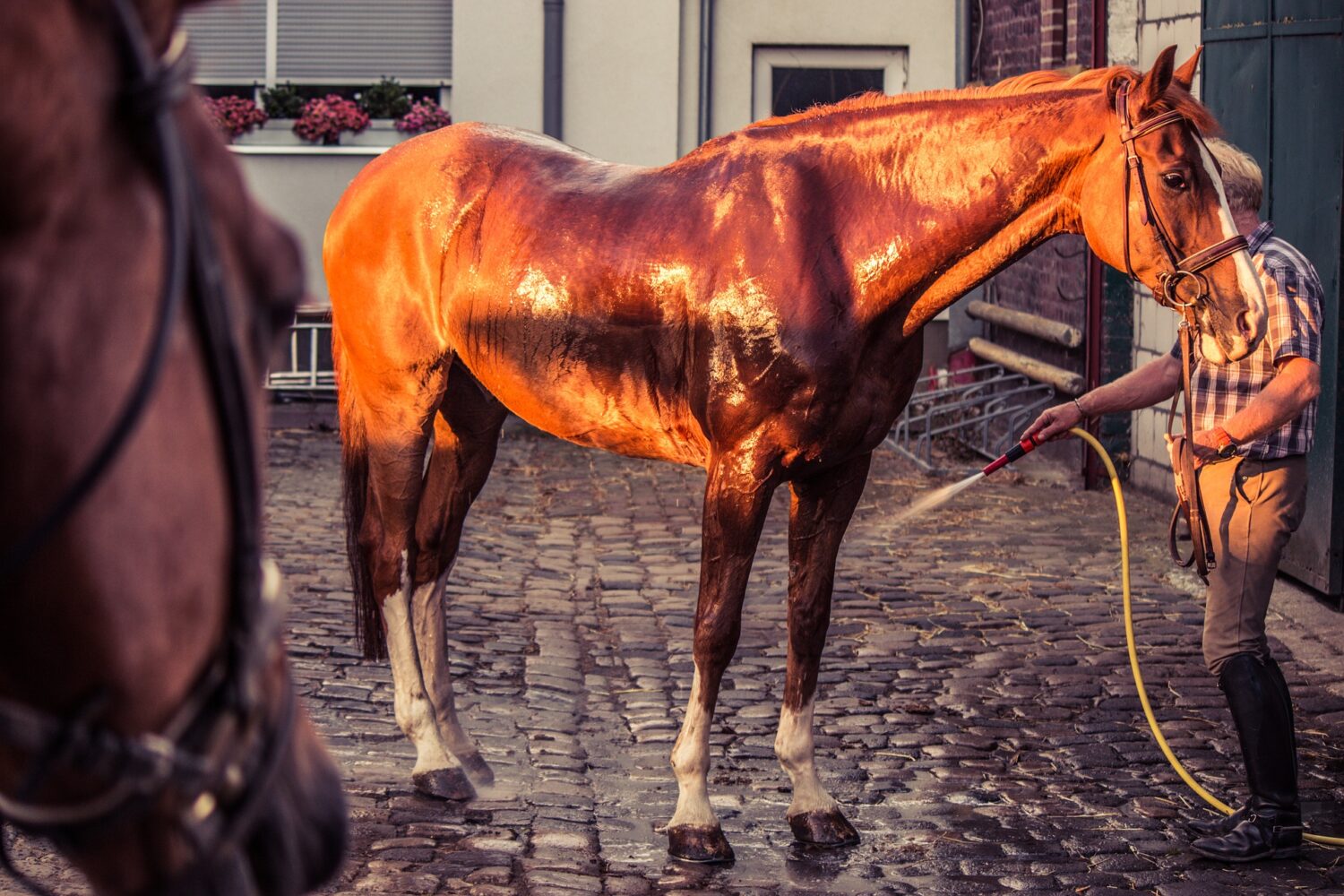It’s a common question that comes up every summer: when is it too hot to ride my horse?
The short answer: It depends.
It depends because every horse is different, with varying fitness levels and conditions that may make it difficult to breathe or sweat as it gets warmer, and every corner of the world has a different climate that a horse gets acclimated to.
So with that in mind, let’s examine some scientific evidence reviewing when heat can present dangerous working conditions for your horse, rules of thumb for telling whether or not your horse is overheating, and some basic cool down procedures and tactics for helping your horse stay comfortable in the heat.
When Do Horses Overheat?
A 2010 study performed at the University of Guelph focused exclusively on a horse’s ability to handle heat. Professor Michael Lindinger, an animal and exercise physiologist at the University of Guelph, explained the results of the study showed, “It only takes 17 minutes of moderate intensity exercise in hot, humid weather to raise a horse’s temperature to dangerous levels. That’s three to 10 times faster than in humans.”
Three to TEN times faster than a human. This is why horses can overheat while we might only be a bit uncomfortable.
When a horse is in work during hot and humid conditions, its muscles are deprived of oxygen and it struggles to replenish those oxygen supplies. Muscles begin to fatigue and the horse’s internal temperature begins to rise.
Horses overheat when their body temperature rises to the point where they can become exhausted, lethargic, and potentially at risk for heat stress, heat stroke, dehydration or more serious, even fatal, complications including hypotension, colic and renal failure.
In this video from SmartPak, a veterinarian discusses some of the factors to determine whether it’s too hot to ride your horse, many of which I’ve mentioned above.
Temperature + Humidity
When we’re talking about heat and horses, relying on the temperature alone won’t help all that much in the making the determination. It’s a good place to start, but a better measurement to rely on is the “RealFeel” available through the AccuWeather app that takes into consideration wind, cloud cover and temperature. This measurement allows you to get a better sense of the intensity of the heat for your horse, but one of the oldest and perhaps most reliable methods of checking whether it’s safe is even simpler than that.
Just add the temperature and humidity. For extra credit, subtract the wind speed.
If the total of those is less than 130, then you’re in the clear. From 130-170, use caution and appropriate available cool-down methods. If the total is above 170, this is typically the warning line for using your best judgment to determine whether or not it’s safe. Or perhaps treat it as a good day for a walk, or a chance to chill and graze on some grass (your horse, not you). Keep in mind, if you’re feeling like you’re about to pass out your horse is feeling at least triple that.
How Can You Tell If Your Horse Is Overheating?
If you’re concerned your horse might be overheating, you’ll probably see a notice a few changes, the first being rapid breathing continuing after exercise or with no exercise at all. While rapid breathing on hotter days is perfectly normal, after a few minutes breathing should resume to a normal, less stressed level. If these levels don’t return to a normal level after some cold hosing and rest, then it’s time to take their temperature to see if anything unusual is happening.
The next thing you can do is check the capillary refill in your horse’s gums. When the gums are pressed on, the normally pinkish color should turn white and return within 3 seconds. If the color doesn’t return, it can be another sign of stress.
If the signs are pointing towards overheating and you’re not able to bring respiratory and heart rates down to a normal level, it’s probably time to call your vet.
Basic Cool Down Procedures & Things You Can Do To Keep You & Your Horse Cool
On a hot day nothing feels better than a jump in a pool, or a lake, or the ocean, or the nearest water trough (see photo below).

A cool hosing does the same thing for a horse and can help drastically lower a horse’s internal temperature and continue keeping them cool through the evaporation of water over a long period of time. It’s effective for both quickly lowering a horse’s internal temperature and giving them a chance to stay cooler for awhile afterwards.
Offering water is another easy way of staving off potential dehydration problems, and adding a little salt to their grain can be extra encouragement to drink on hotter days. This small addition can help replace some of the salt that’s excreted through sweat on hotter days and help encourage drinking on hot days when moving around might not be much of a priority.
Electrolytes are another common supplement for horses training at high levels in extremely hot or humid conditions, due to the amount of minerals lost while sweating for long periods of time. If your horse doesn’t sweat much or isn’t in a strenuous amount of work, then electrolytes probably won’t be much of a help.
As a last line of defense for yourself, you can always get one of these little bad boys. Spritz and spray the heat away all day, kids!

